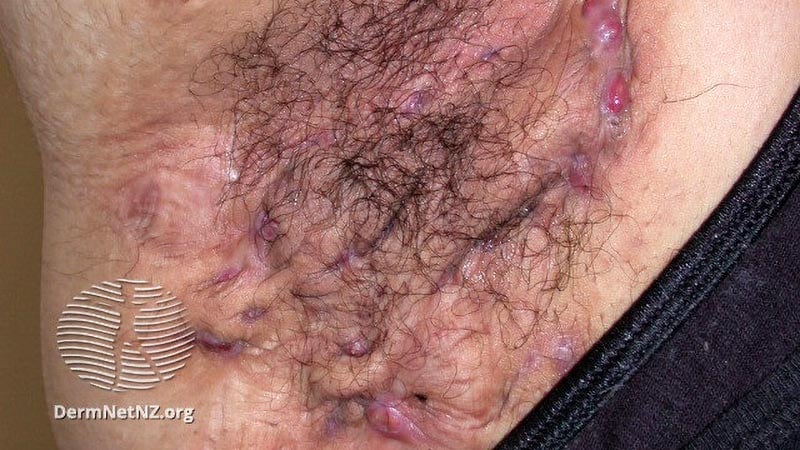TOPLINE:
A retrospective study found that individuals living in socioeconomically disadvantaged neighborhoods had a higher risk of developing hidradenitis suppurativa (HS), an association that persisted across racial and ethnic groups.
METHODOLOGY:
- This cross-sectional analysis included 65,766 individuals (mean age, 50.4 years; 41.8% women; 56.5% White; 15.7% Asian, Native Hawaiian, or other Pacific Islander; 7.5% Hispanic; and 3.8% Black individuals) from dermatology clinics at the University of California San Francisco health system between August 2019 and May 2024.
- Neighborhood-level socioeconomic status (nSES) was assessed at the census tract level using a validated index derived from seven socioeconomic indicators.
- Patients were categorized into five nSES quintiles, with Q1 representing the lowest SES neighborhoods and Q5 the highest.
- The study outcome was HS diagnoses.
TAKEAWAY:
- A total of 485 participants (0.7%) received a new HS diagnosis. The proportion of patients with HS was highest in Q1 (24.3%).
- After adjusting for age, sex, and race/ethnicity, the odds of an HS diagnosis decreased with each successive increase in nSES compared with the highest quintile (odds ratio, 3.32 for Q1, 2.25 for Q2, 1.97 for Q3, and 1.44 for Q4; P < .001 for linear trend).
- Race-stratified analyses showed consistently higher odds of HS diagnosis in lower SES neighborhoods among Black, Hispanic, and White individuals.
- Obesity partially mediated the association between nSES and HS diagnosis (adjusted proportion mediated, 0.17-0.35 across all quintiles).
IN PRACTICE:
“This cross-sectional study found that nSES was independently associated with a new diagnosis of HS in dermatology patients,” the study authors wrote. This finding, they added, “supports the hypothesis that neighborhood-level factors may influence the development of HS.”
SOURCE:
The study was led by Aileen Y. Chang, MD, University of California San Francisco School of Medicine, and was published online on May 14 in JAMA Dermatology.
LIMITATIONS:
The generalizability of the effect size could be limited outside of the San Francisco Bay Area. Other limitations were selection bias, missing data, underpowered subgroup analyses, cross-sectional design. Also, nSES was assessed only at the index visit.
DISCLOSURES:
The study received support from the University of California San Francisco Academic Research Systems and the National Center for Advancing Translational Sciences of the National Institutes of Health. Chang and another author disclosed receiving support from the National Institute of Arthritis and Musculoskeletal and Skin Diseases for this study. Two authors declared receiving personal fees from Abbvie, Medscape, Novartis, UCB, and Sonoma Biotherapeutics, Aurinia, UCB, and AstraZeneca and serving as vice president of the Hidradenitis Suppurativa Foundation.
This article was created using several editorial tools, including AI, as part of the process. Human editors reviewed this content before publication.
Source link : https://www.medscape.com/viewarticle/lower-income-neighborhood-linked-risk-hidradenitis-2025a1000bpx?src=rss
Author :
Publish date : 2025-05-14 15:00:00
Copyright for syndicated content belongs to the linked Source.
